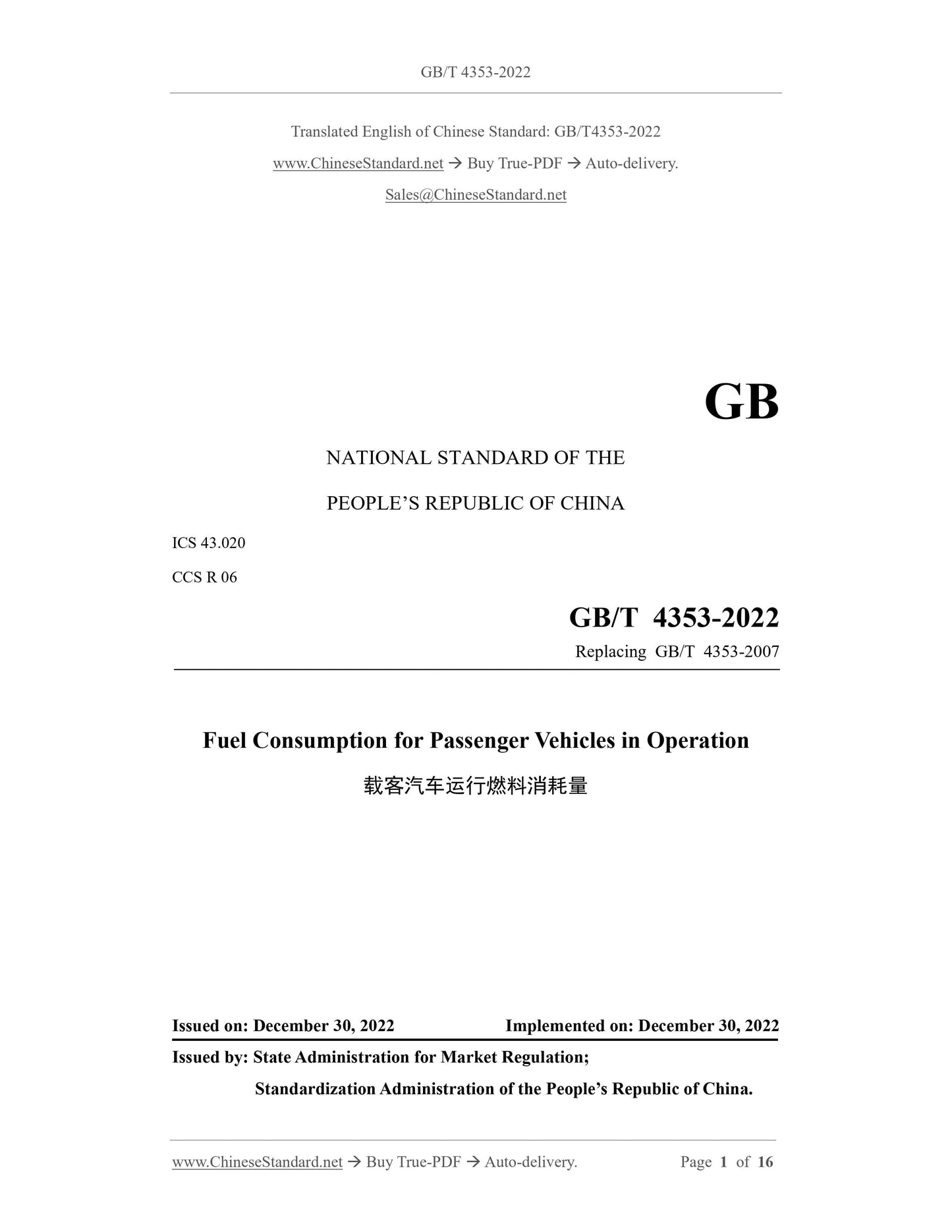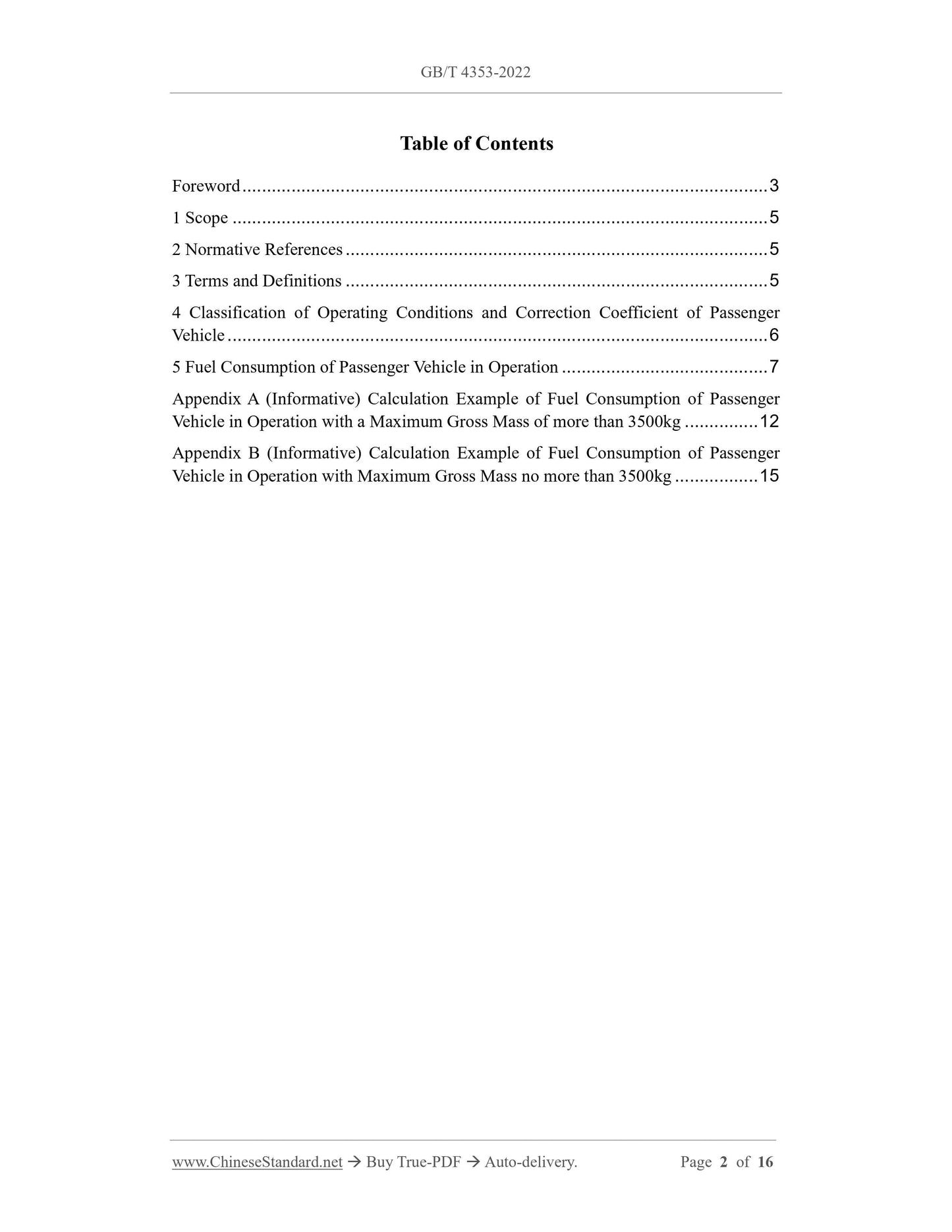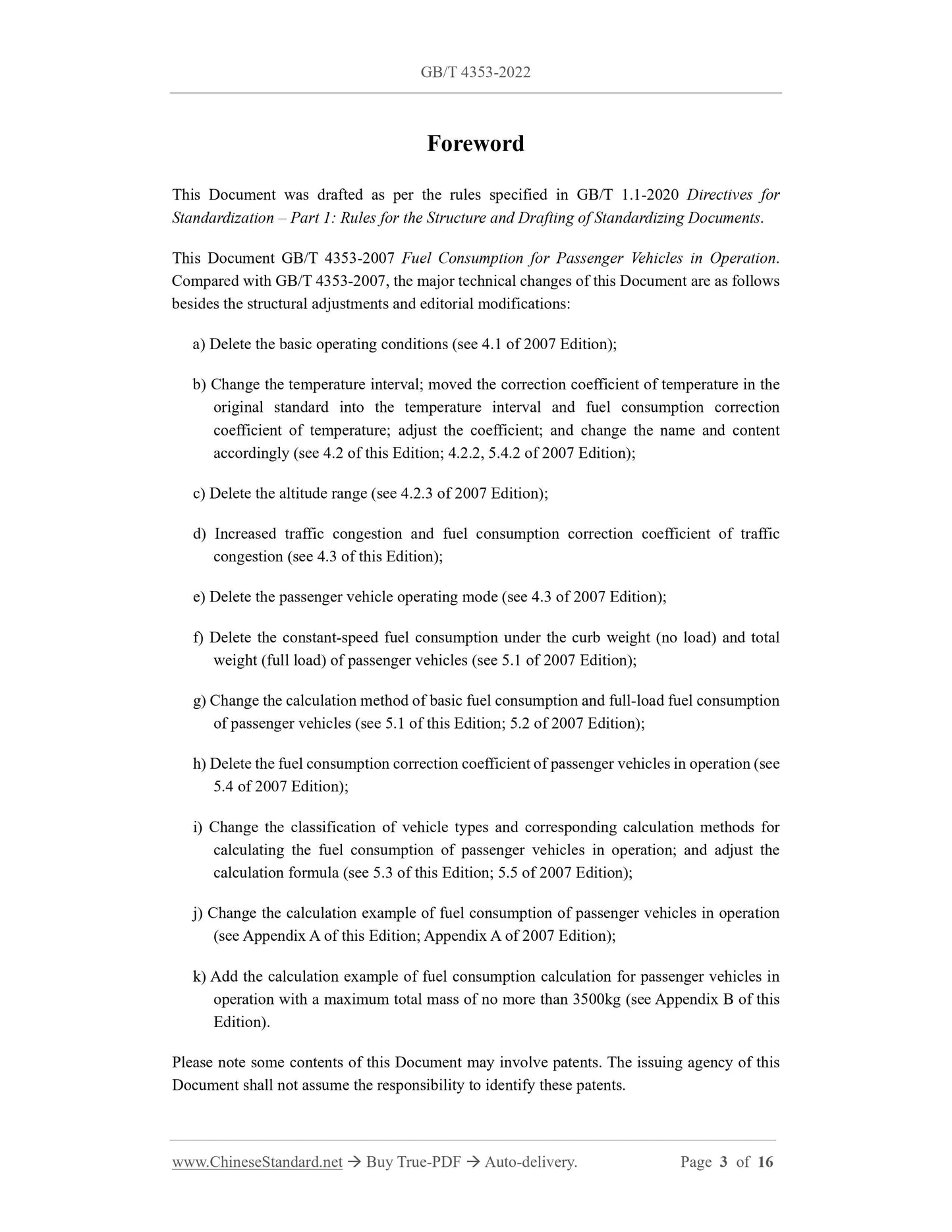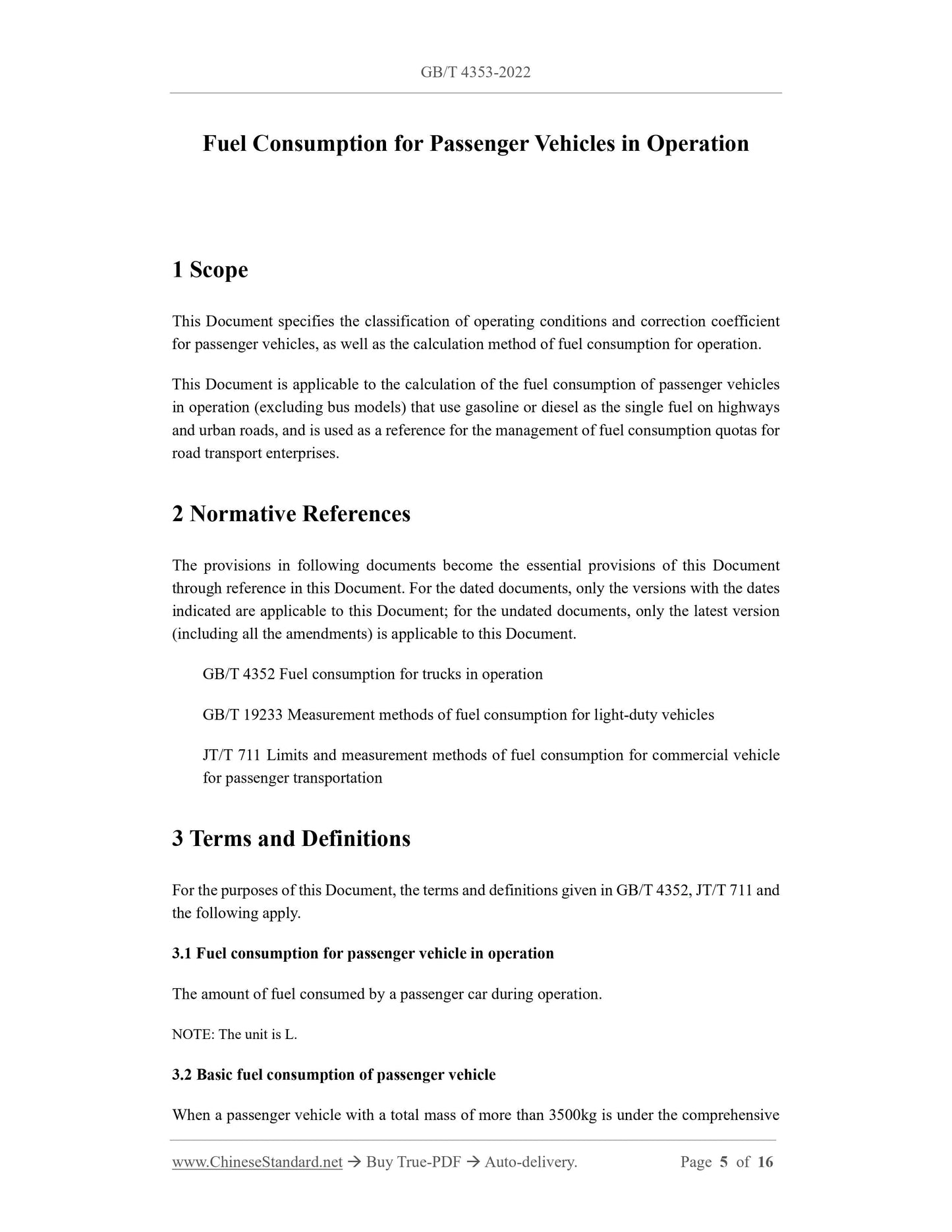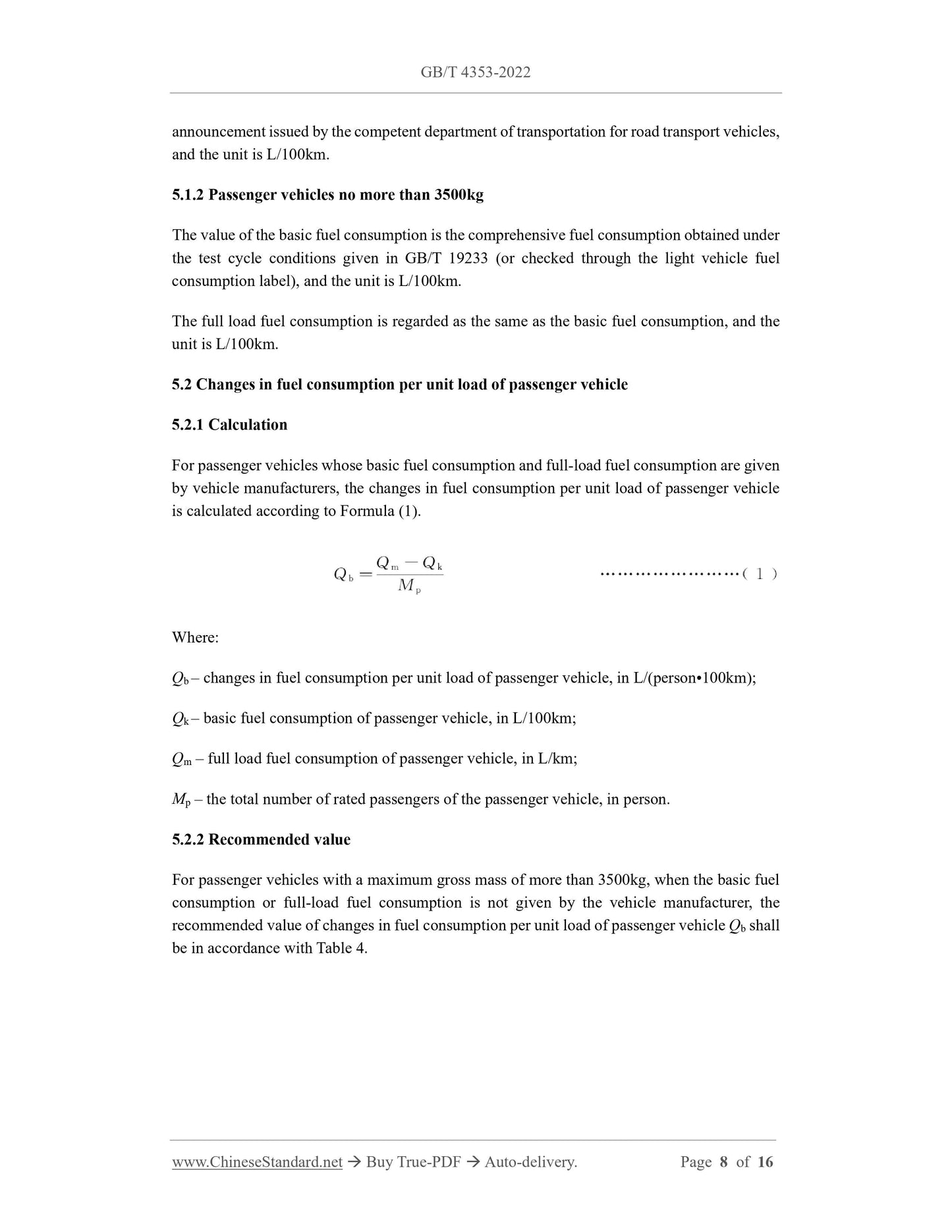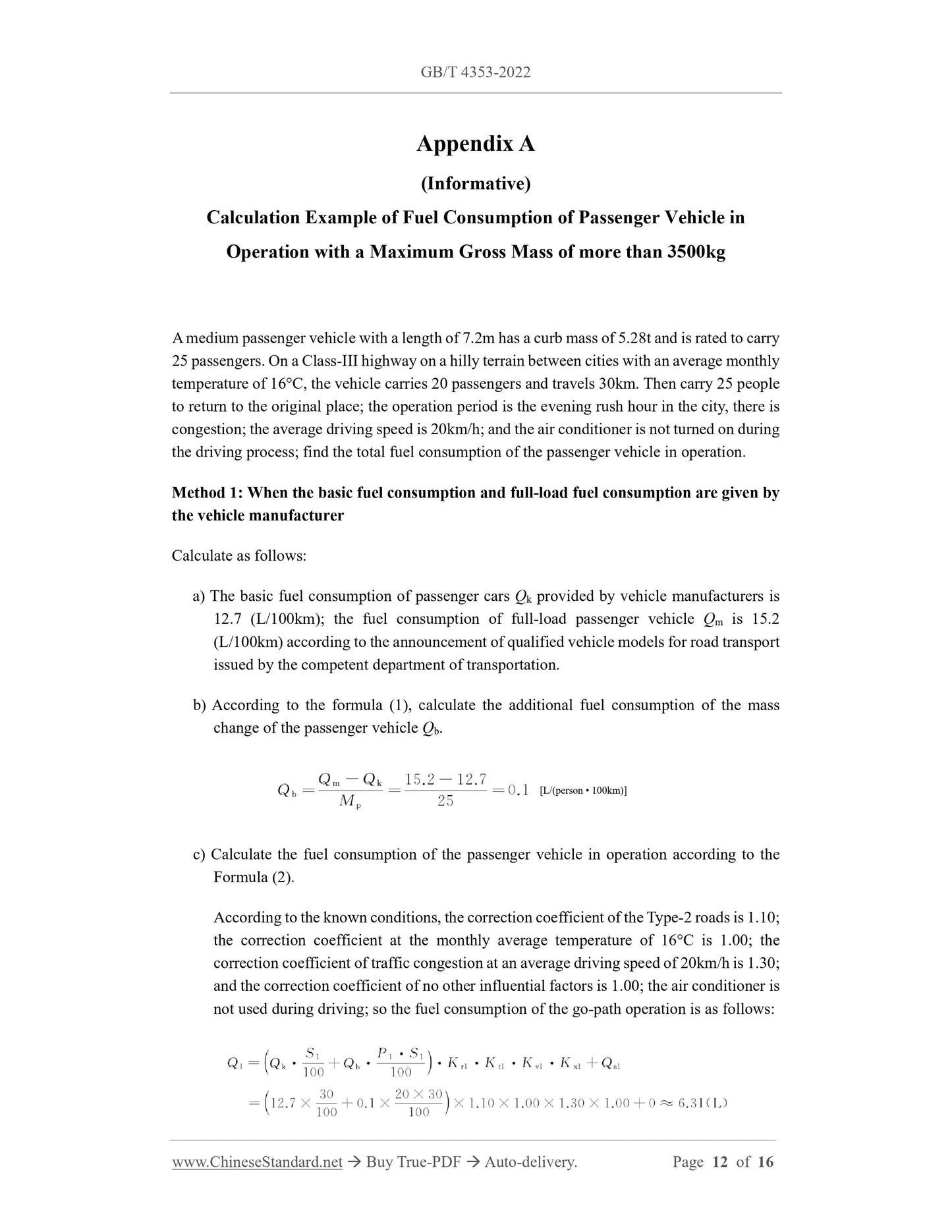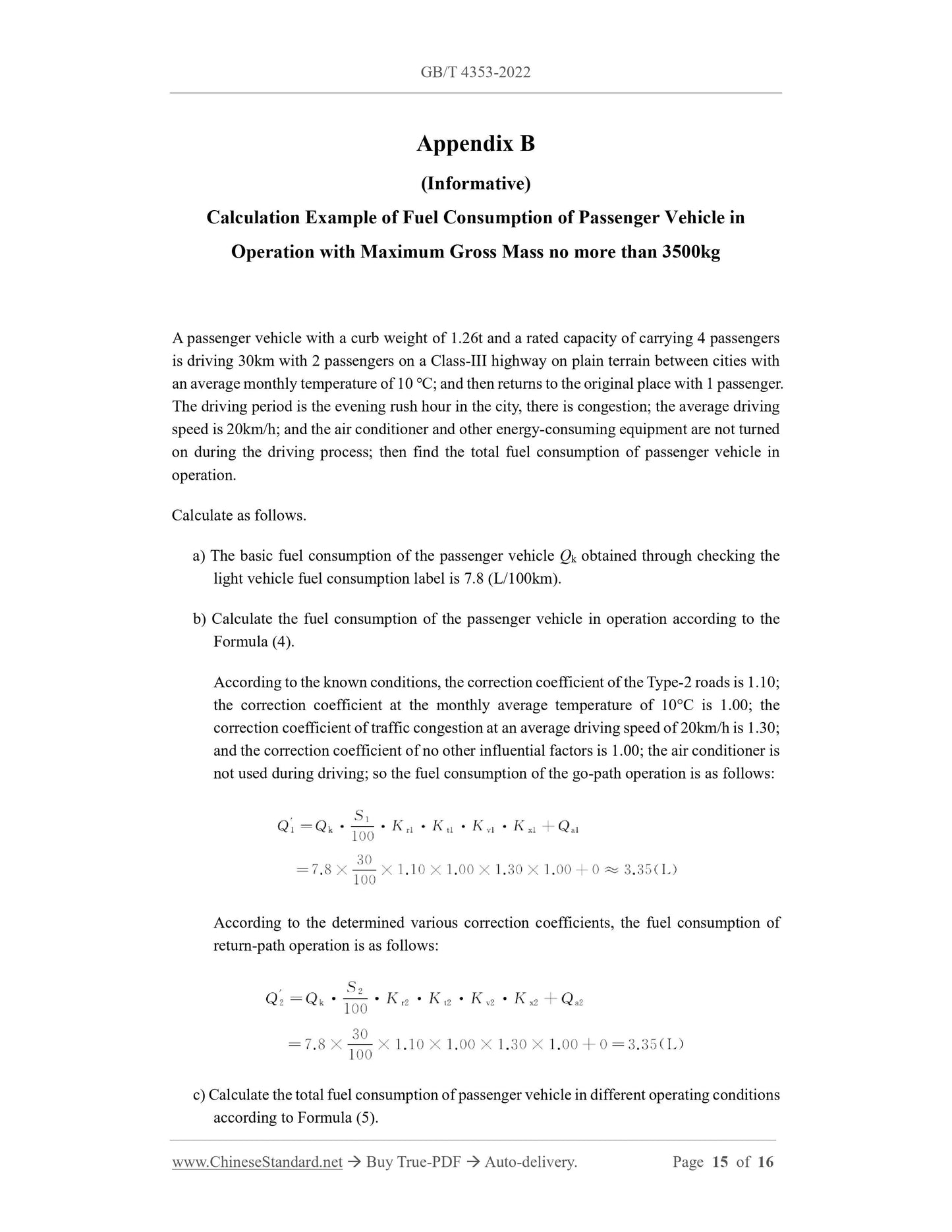1
/
of
7
www.ChineseStandard.us -- Field Test Asia Pte. Ltd.
GB/T 4353-2022 English PDF (GB/T4353-2022)
GB/T 4353-2022 English PDF (GB/T4353-2022)
Regular price
$155.00
Regular price
Sale price
$155.00
Unit price
/
per
Shipping calculated at checkout.
Couldn't load pickup availability
GB/T 4353-2022: Fuel consumption for passenger vehicles in operation
Delivery: 9 seconds. Download (and Email) true-PDF + Invoice.Get Quotation: Click GB/T 4353-2022 (Self-service in 1-minute)
Newer / historical versions: GB/T 4353-2022
Preview True-PDF
Scope
This Document specifies the classification of operating conditions and correction coefficientfor passenger vehicles, as well as the calculation method of fuel consumption for operation.
This Document is applicable to the calculation of the fuel consumption of passenger vehicles
in operation (excluding bus models) that use gasoline or diesel as the single fuel on highways
and urban roads, and is used as a reference for the management of fuel consumption quotas for
road transport enterprises.
Basic Data
| Standard ID | GB/T 4353-2022 (GB/T4353-2022) |
| Description (Translated English) | Fuel consumption for passenger vehicles in operation |
| Sector / Industry | National Standard (Recommended) |
| Classification of Chinese Standard | R06 |
| Classification of International Standard | 43.020 |
| Word Count Estimation | 11,167 |
| Date of Issue | 2022-12-30 |
| Date of Implementation | 2022-12-30 |
| Older Standard (superseded by this standard) | GB/T 4353-2007 |
| Issuing agency(ies) | State Administration for Market Regulation, China National Standardization Administration |
Share
